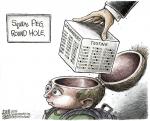
Estimated reading time:2.5 minutes "The person who never made a mistake never tried anything new." Albert Einstein Bringing up the subject of standardized testing will make children and parents alike cringe with anxiety. Timed tests, No. 2 pencils and endless test-taking strategies are enough to make anyone’s hands sweat, wring a tummy into knots and cause sleepless nights — both in preparation for the test and afterward while awaiting the results. Test Types Not all standardized tests are created equal, and their purposes are very different from each other.
A norm-referenced assessment measures how well your child understands a specific learning goal in comparison with everyone else who answered that same question. These scores are measured in percentiles, so if your son or daughter scored at the 95th percentile, he or she did better than 95 out of 100 other students who answered the same question.
A criterion-referenced test determines how well a student knows a learning objective or standard. These assessments, also called content referenced tests, measure understanding based on what has been taught. While detractors argue against argument “teaching to the test,” this type of test requires that specific skills have been taught and mastered.
Keeping a little perspective can help you get the best out of standardized testing for your child. 1.
To say that your daughter earned a 78 on a test, so she must always be a C+ student is equivalent to saying that her temperature at the doctor’s office was 101°F, so she always runs a fever. A single score on a test is no more a snapshot of your child’s future than her annual school photo. It merely marks a moment in time. 2.
Preparation for the two assessment types can be very different, but ultimately, you can create an environment geared toward success by encouraging him to read both fiction and non-fiction daily, provide a supportive learning environment and talk about assessment results and future goals with him. 3.
High stakes testing is not likely to recede into the educational background. Big data is a buzz phrase in the business world, and education is catching up with the data analysis trend. Your child, however, is more than a test score. He or she plays sports or a musical instrument, shows kindness to others and loves you back with all of his or her heart. Your child knows just how important a standardized test can be. Performance on a particular test can determine a pivotal outcome in many situations, including the university he or she will attend, whether college credit can be earned as a high school student, and the results may even point toward a recommended profession — or steer your child away from it. The job of parents — and teachers — is to prepare students and use the data results wisely in creating the direction for their children’s future learning.